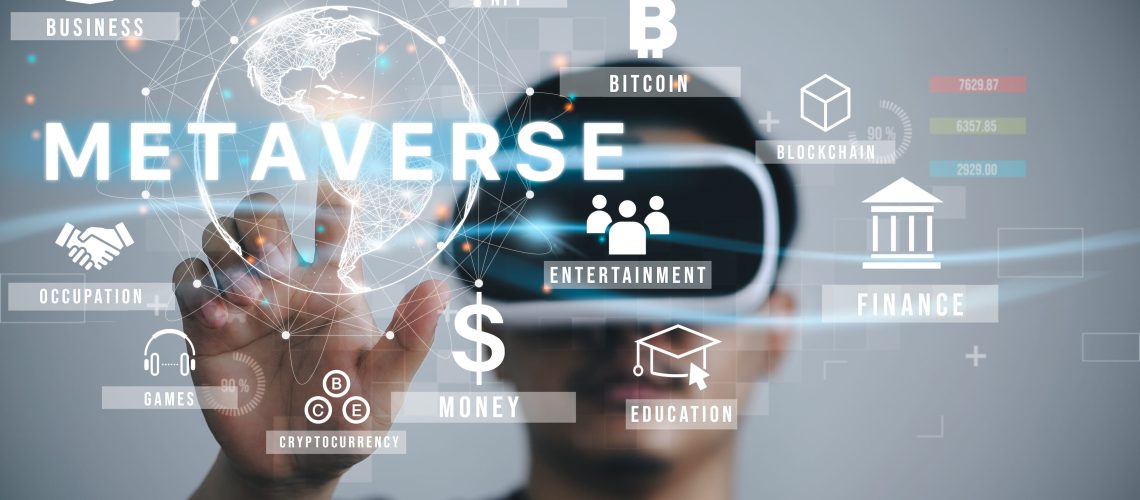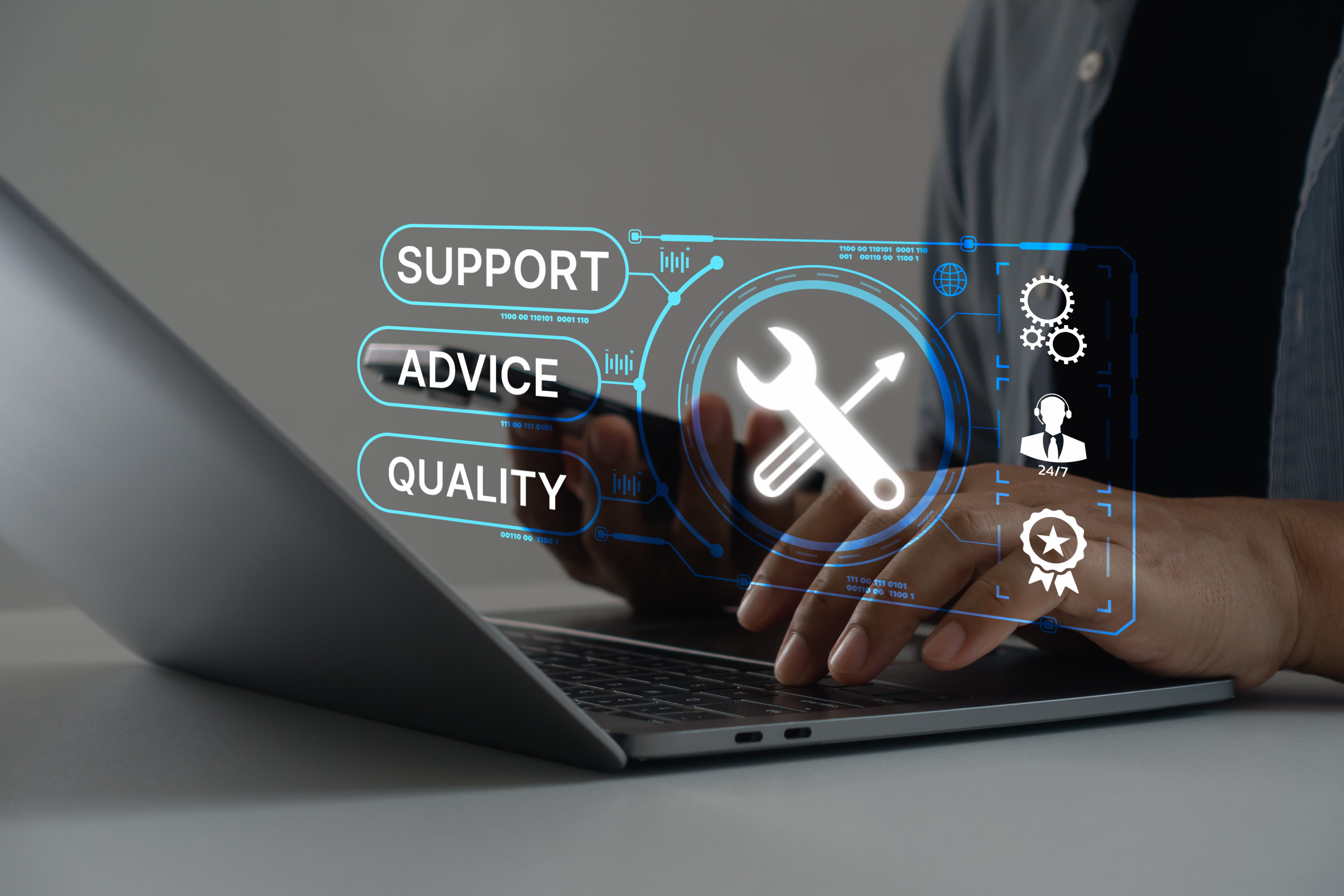The metaverse is emerging as a serious business consideration, moving from a speculative concept to a strategic opportunity. As immersive digital spaces influence how people connect, shop, and work, forward-looking companies question what this shift means for their growth and competitiveness.
This blog deeply explores the metaverse: what it is, the technologies that drive it, the metaverse business opportunities it creates, and the challenges leaders must prepare for. By the end, you’ll have a clearer understanding of the impact of the metaverse on business and how your organization can position itself for success in this evolving digital landscape.
What Is the Metaverse?
The metaverse is best described as a persistent, interconnected network of digital environments where people can interact, work, shop, and socialize using immersive technologies. Think of it as the evolution of the internet into a three-dimensional space. Instead of browsing flat web pages, users navigate virtual worlds, often represented by avatars, where real-time interactions feel more natural and lifelike.
Unlike isolated video games or social platforms, the metaverse is envisioned as a collective ecosystem. It blends virtual reality in business with augmented reality overlays, blockchain-based economies, and AI-driven personalization.
AltIndex.com predicts that by 2030, 2.6 billion people will actively engage in the metaverse. The average value experienced by each user is projected at $92, signaling both consumer adoption and significant commercial potential.
For businesses, the metaverse is not just a futuristic idea. It is emerging as a strategic layer of digital transformation, shaping how brands interact with customers, employees, and partners.
Key Technologies Powering the Metaverse
The metaverse wouldn’t be possible without a foundation of converging technologies. Three stand out:
Virtual Reality (VR)
VR immerses users into fully digital environments through headsets and haptic devices. VR applications transform training, product design, and remote collaboration in business. For example, a construction firm can simulate hazardous environments for worker training without real-world risks.
Augmented Reality (AR)
AR overlays digital elements onto the physical world, often through smartphones or AR glasses. Retailers use AR to let customers “try on” clothes or preview furniture in their homes before purchase. These interactive experiences enhance engagement and drive higher conversion rates.
Blockchain and Digital Assets
The backbone of metaverse economies lies in blockchain technology. It enables secure transactions, digital ownership, and tokenized assets. Non-fungible tokens (NFTs) and cryptocurrencies are already being tested for virtual real estate, branded collectibles, and decentralized commerce.
Together, these technologies fuel the next wave of metaverse technology trends, setting the stage for new digital commerce and collaboration.
Business Opportunities in the Metaverse
The metaverse business opportunities extend far beyond marketing gimmicks. They touch nearly every function of the modern enterprise:
- Customer Engagement and Marketing: Companies can host immersive product launches, branded virtual events, or interactive showrooms where consumers engage in memorable ways. Nike, for instance, has experimented with digital sneakers and branded worlds.
- Collaboration and Remote Work: Virtual meeting rooms replicating physical spaces can reduce “Zoom fatigue” and foster more dynamic partnerships. Gartner forecasts that by 2026, 25% of people will spend at least one hour per day in the metaverse for work, shopping, or socializing.
- Training and Education: Aviation companies and medical schools leverage VR simulations to train pilots and surgeons more effectively than traditional classroom methods.
- Commerce and Digital Assets: Virtual real estate is already being bought and sold. Brands can monetize digital goods exclusively in the metaverse, expanding revenue streams.
When surveyed, 95% of business leaders expect the impact of the metaverse on business to be favorable within the next 5–10 years.
Potential Challenges and Risks for Businesses
Despite its promise, the metaverse comes with significant hurdles.
- Cost of Adoption: VR headsets, AR glasses, and immersive platform development demand substantial investment. Smaller businesses may struggle to justify ROI in the early stages.
- Privacy and Security: Data collection in immersive spaces raises new concerns. Tracking eye movement, biometric data, and behavioral cues introduces regulatory and ethical questions.
- Standardization Issues: Without a unified infrastructure, businesses risk building in siloed environments that may not interconnect.
- Cultural Resistance: Not every consumer or employee will be eager to shift activities into virtual environments. While 60% of early adopters express enthusiasm, a sizeable portion remains skeptical.
According to Deloitte, businesses that rush into the metaverse without a clear strategy risk reputational harm and wasted resources. Leaders need to weigh opportunity against risk before diving in.
Early Adopters and Industry Use Cases
Specific industries are already experimenting with metaverse applications for companies:
- Retail: Walmart and Gucci have launched virtual stores where customers browse products in immersive settings.
- Healthcare: Clinics use VR for pain management therapy and AR for surgical guidance.
- Manufacturing: BMW uses digital twins in the metaverse to test production line designs before physical rollout.
- Education: Universities pilot “metaversity” campuses, providing immersive learning experiences.
McKinsey estimates the metaverse could generate $5 trillion in value by 2030, with e-commerce and learning leading adoption. For early movers, the competitive edge is already forming.
Preparing Your Business for Metaverse Integration
Preparation doesn’t mean leaping into every trend. It means developing a thoughtful roadmap. Business leaders should consider:
- Assessing Business Fit: Which processes or customer touchpoints could benefit from immersive technologies?
- Investing in Infrastructure: Cloud computing, cybersecurity, and data management form the backbone of scalable metaverse adoption.
- Upskilling Teams: Employees will need training in VR design, blockchain applications, and immersive marketing. PwC predicts that immersive technologies could enhance workforce productivity and efficiency across industries.
- Partnering Strategically: Collaborating with technology providers, startups, and industry consortia can reduce risks and accelerate adoption.
A phased approach allows companies to test, learn, and scale intelligently.
The Future Outlook of the Metaverse in Commerce
The impact of the metaverse on business is expected to grow steadily over the next decade. In the coming years, expect to see:
- More seamless integration between physical and virtual shopping.
- Growth of decentralized finance models within digital worlds.
- Expanded virtual reality in business for recruitment, onboarding, and remote team culture.
- New metaverse technology trends are shaping cross-industry ecosystems.
Companies that view the metaverse as a complement to their core strategy will be the ones that capture long-term value.
How Plexus Technology Can Help
The metaverse is becoming a strategic frontier. Navigating it requires both vision and technical expertise. Plexus Technology helps businesses explore metaverse applications for companies, assess readiness, and align initiatives with measurable outcomes.
Whether your organization is curious about immersive customer experiences, secure blockchain integration, or leveraging virtual reality in business for training, Plexus Technology can guide your transformation journey.
Contact us today to discuss how your firm can take advantage of the next wave of metaverse business prospects.


















